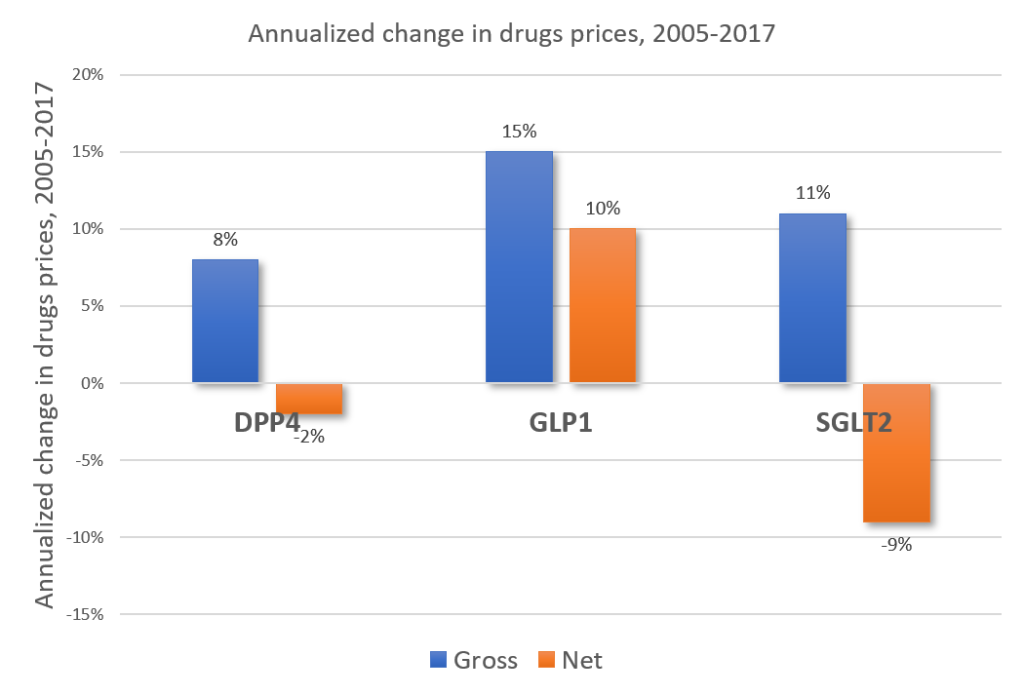Conventional wisdom would hold that the prices are rising…aren’t they? To correctly answer this question, one must define which prices you are talking about. Are we looking at the list price that is widely available or the net price after we take into account discounts are rebates life sciences firms pay?
A paper by Sarpatwari et al. (2021) aims to answer this questions for novel treatments for type 2 diabetes. The drug classes they examined were: glucagon-like peptide 1 (GLP1) agonists, dipeptidyl peptidase 4 (DPP4) inhibitors, and sodium glucose cotransporter 2 (SGLT2) inhibitors. While list prices (i.e., wholesale acquisition cost, or WAC) for these drugs are widely available, net prices are more difficult to obtain. The authors used information from SSR Health to measure the amount of rebates and discounts provided.
Using these data, they find that while gross prices increased by 8-15% between 2005 and 2015, but net prices actually fell for 2 of 3 drug classes.

Headlines about rising drug prices may not be focusing on the right number. While gross prices are a useful metric to track, net prices represent the true cost to health insurers and governments.
Methods detail: Sources used by SSR Health to measure net total sales, units, and net unit prices.
Net US sales in the SSR Health database were derived from three sources (10-K forms filed with the Securities and Exchange Commission, annual reports, and investor calls) and account for discounts such as commercial and Medicaid rebates, special discounts provided by the 340B program for certain drugs dispensed by safety-net providers, and manufacturer coupons that patients use to reduce out-of-pocket copayments. SSR Health estimates of sold units were obtained from Symphony Health, an aggregator of pharmaceutical market data
Source:
- Ameet Sarpatwari, Frazer A. Tessema, Marie Zakarian, Mehdi N. Najafzadeh, and Aaron S. Kesselheim. Diabetes Drugs: List Price Increases Were Not Always Reflected In Net Price; Impact Of Brand Competition Unclear. Health Affairs 2021 40:5, 772-778